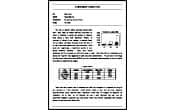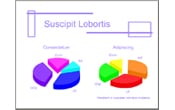|
|
 |
 |
|
|
Consumers want to make informed decisions when buying printers and printing supplies. While printing capabilities, print quality, speed, product features and ease-of-use are typically the most important considerations, customers often want to compare costs as well. HP offers a broad range of printing systems with different capabilities, purchase price combinations and ongoing operating costs in recognition of the fact that consumers have different needs. When comparing costs, customers need to look at a range of factors, including quality, reliability and productivity. Measurements of page yield and related estimates of cost-per-page (CPP) are one part of the economic picture. This article will discuss considerations in measuring inkjet yield.
|
| |
|
 |
|
 |
|
|
HP wants customers to have meaningful information on relevant factors, including yield, to help them make the best choice of printing system. Currently, comparing inkjet yield measurements across manufacturers is difficult because there are many factors that affect yield and yield measurement, while different manufacturers use different measurement methodologies. The test document, print quality modes, end-of-life determination, sample size, time between print jobs and environmental conditions all affect yield and yield measurement. As a result, yields from different suppliers will be difficult to compare.
Viable comparison of ink yields requires the use of a standard approach to yield measurement across the printing industry. In the case of monochrome laser printers, a standard exists - the ISO/IEC 19752 monochrome toner cartridge yield standard - established by the International Organization for Standardization (ISO). HP is participating in ISO's current efforts to create a yield measurement standard for inkjet cartridges and printers. Until an inkjet standard is established, HP will continue to use its own robust yield testing methodology. Many aspects of HP's inkjet methodology are similar to the key elements in the ISO monochrome toner cartridge yield standard.
|
| |
|
 |
|

|

|

|
| Black text and graphics; one page of 8.5x11/A4 plain paper;
Default black mode, in which the printer is set when shipped
|
Colour graphics; one page of 8.5x11/A4 plain paper;
Default colour mode
|
Photo suite; 10 individual 10x15 photos;
Default setting for photo paper
|
|
|
| |
|
 |
|
HP believes that consistent application of testing criteria is crucial in determining accurate and comparative inkjet yield measurements. Because there is variation between individual printers and between individual cartridges, several units are tested for each model to determine an approximate yield. HP's testing methodology includes the following:
- Typically, three printers of each model are used for each test.
- Typically, nine cartridges per cartridge model are tested for each of the black, colour and photo yield test.
- The specific test documents are representative of consumer documents. Test photos are representative of typical subject matter for amateur photographers.
- Test files are sent from a computer to the printer for testing.1 Printing during tests is nearly continuous, with normal breaks for changing paper.
- Temperature and humidity are controlled to reflect ambient home or office conditions.
HP also uses clearly defined criteria for determining when a cartridge reaches its end of life, a critical component for accurately calculating yield. For some printers, an on-screen message indicates "out of ink". For all other printers, a visual inspection is conducted for the discoloration typically observed when inkjet cartridges are running out of ink. End-of-life determination includes confirmation of the out-of-ink status by weighing each cartridge and comparing the result to the original cartridge weight.
While today customers sometimes compare cartridge ink volumes in millilitres, this is not a reliable indication of the relative number of pages that can be printed. HP recommends that customers look for yield, rather than millilitre, information when comparing printers and cartridges, because printers from different manufacturers vary in efficiency and the amount of ink they use to print a page. In fact, even two printers from HP that use the same cartridge can produce different yields, depending on the type of printing for which the specific printer is optimised. Specific yields for many recently introduced HP printers can be found at this website.
|
| |
|
 |
 |
The Value of Recognised Standards
|  |
 |
|
|
|
Recognising that yield is only part of the overall cost of printing, HP wants customers to have meaningful information on all the factors involved - including useful information to compare yields - to enable them to make the best choices for their needs. In addition to developing robust, reliable yield measurement methodologies for its own printers, HP supports voluntary industry standards, including the efforts of ISO (International Organization of Standards). ISO sets standards that help enhance customer choice, facilitate trade and improve environmental performance. The ISO monochrome toner standard, in which HP participated and which HP adopted, helps to improve yield testing throughout the printing industry and allows accurate comparisons. HP is actively participating with ISO in the development of an inkjet standard that will provide yields for combined text and graphics printing.
Even when standards are in place, yield information should still be used with care. For example, all inkjet printers use some ink before printing begins if the printer has not been used in a while or when a new cartridge is installed, to keep the ink flowing smoothly and the nozzles clear. Some printers use a lot of ink for this process, while others are engineered to use very little. Inkjet cartridge yields quoted by manufacturers and product reviews today are typically measured by printing continuously until the cartridge is empty. The proposed ISO standard also uses continuous printing. Since there is no break in printing, the ink used between jobs in everyday printing is not considered. These yields provide a useful baseline for comparing products but do not give a complete picture. Much as city and motorway driving results in different fuel consumption and fuel economy for different vehicles, customers will experience different page yields based on the efficiency of their printer and their actual usage. All HP printers are designed for efficiency to save you ink and money. Click here for more information on printer efficiency differences.
|
| |
 |  |  |
|
 |
 |
|
